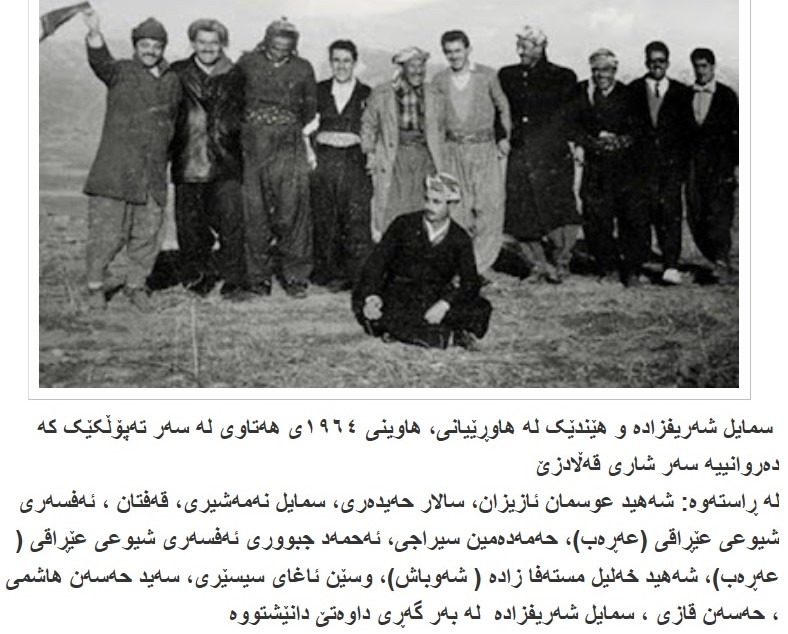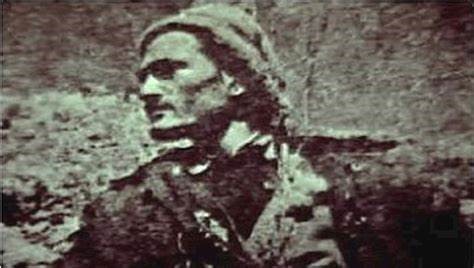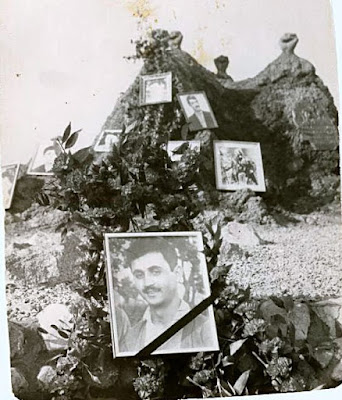In the early 1960s, as a result of the development of education and higher education in Iran, a small group of Kurdish students from the upper classes of Kurdish society were admitted as students in the universities of Tehran and Tabriz. The first semi-secret organization of Kurdish students, the Union of Kurdish Students of Tehran University (1959), was founded by this group of students and a year later its name was changed to the Union of Kurdish Students in Iranian Universities (1960). Within this union, the foundations of new Kurdish poetry in the East part of Kurdistan with political-revolutionary themes were established by Swara Ilkhanizadeh, Ali Hasaniani, and Fateh Sheikholeslami.

Initially, cultural issues were the main focus of the union's cooperation and activities, but after a short time, in 1961, the union established official but secret relations with the Kurdistan Democratic Party in 1961 a nationalist theme. At the same time, the dominance of leftist thought in Iranian universities led some of these Kurdish students to turn to the left in 1960-1963 and separated from the nationalist movement of the Students' Union. The most famous of these were Amir Hasanpour and Fateh Sheikholeslami.
Following a new wave of political repression of dissident activists in 1963, this group was forced to drop out of university and flee to the southern part of Kurdistan. The students were Hamadmin Seraji, Ismail Sharifzadeh, Salar Haidari, Abdullah Mo'ini, and Rasoul Pishnamaz. Three years later, Due to his opposition to the then leadership of the Democratic Party, Ahmad Tawfiq, they founded the Revolutionary Committee of the Democratic Party in 1966 to organize their political and social positions and for armed struggle in the East part of Kurdistan. The founding members of this movement were Ismail Sharifzadeh, Mullah Ahmad Shalmashi (Mala Awara), Sanar Mamadi, Mohammad Amin Seraji, Mullah Abdullah Sarbaz, Salar Haidari, and Saied Kawa.

They were able to develop their organizations among refugees of Eastern Kurdistan in the south as well as inside the east and establish friendly political relations with the group known as Jalali in the south. In early 1967, the cadres of the Revolutionary Committee formed several fighter groups and went to the Kurdish areas of Urmia province and the cities of Saqqez and Bana in Sna province and began political campaigning and trying to organize a broader social base among rural farmers.

Smail Sharifzadeh and Hamademin Seraji
The leaders of the Revolutionary Committee were strongly influenced by Maoist thought and ideas and expressed their support for the Maoist movement in the magazines Roj and Tishk. In fact, the leaders of the Revolutionary Committee believed that the only way to liberate all subjugated and colonized nations was through mass uprising and armed struggle, which must first start in the villages and encourage the working masses to armed struggle. The Revolutionary Committee deeply believed in the importance and necessity of unity and solidarity to transform the Kurdistan armed movement into a nationwide struggle in Iran. The well-known leader of this movement, Smail Sharifzadeh, was active in the student movement and was in contact with Kurdish and non-Kurdish intellectuals and students – including Alireza Nabdel (a friend when they were students) and Behrooz Dehghani.

Mala Awara
Finally, after 18 months of armed struggle, on May 12, 1968, the first delegation of this group led by Sharifzadeh came to the area and was surrounded by the enemy in one of the villages of Bana. In this conflict, Sharifzadeh and his comrades were killed by the repressive forces of the Shah's regime. The next group was commanded by Mullah Ahmad Shalmashi (Mala Awara), who was surrounded in the Sardasht region, and Mala Awara was killed. In the same month, Sulaiman Mo'ini was killed by the PDK in South part of Kurdistan and a month later Abdullah Mo'ini was killed by Iranian forces near the village of Qalo in Bokan. Because of this incident, the villagers later changed its name to Qalo Mo'ini.

Smail Sharifzadeh's grave in Tayla cemetery of Sna
Following the collapse of the revolution, a new and systematic wave of repression and execution of political activists, displacement, and refuge in the liberated areas of the southern part of Kurdistan began. The remnants of the revolutionary armed forces have been reorganized in the Political Bureau camp under the name of the Kurdistan Democratic Party Revival Branch.
Although the Kurdistan guerrilla revolution failed, its effects were significant in Kurdistan and throughout Iran. The Shah of Iran, who felt political peace and stability during those years and therefore called Iran a peaceful island in the Middle East, fell into a storm of armed uprisings in 1967-1968. This uprising became the first semi-leftist guerrilla uprising in Iran (three years before Operation Siakel in northern Iran) and recorded a golden chapter in the history of the Kurdish and Kurdistan liberation movements.








